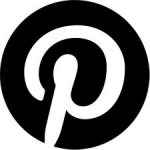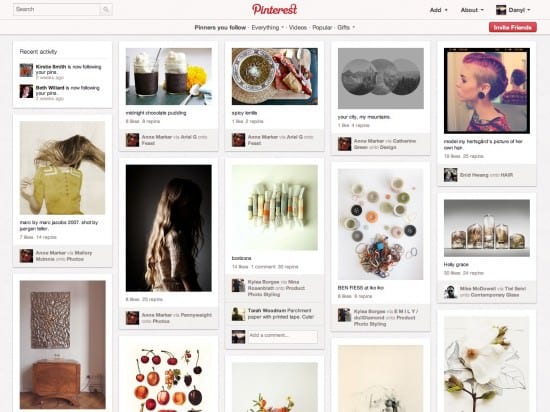A short guide to help review if and how you use Pinterest

Prompted by interest in my first post on the marketing opportunities for Pinterest a couple of weeks ago, I thought a more considered ideas post might be useful. So I've summarised the key points that I feel are relevant to consider if you're set on taking your brand onto Pinterest. I've not got into the mechanics of how it works, others do it better already. First things first…
A reminder - what is Pinterest?
Pinterest is a platform for crowd sourced visual content grouped into topics (mostly lifestyle at the moment). From a broader perspective, it's a social network that allows users to visually share new interests by 'pinning' images or videos to their own or others' 'pinboards' (a collection of 'pins' that have a common theme).
Maybe this cartoon explains it best (source) it's addictive!

Crucially, Pinterest has a huge visual emphasis, a lot of shared mood-boards is how it first stuck me. It represents a collated view of a person's lifestyle or set of interests. The benefit to the user is that I can discover 'people like me', and so stuff I might like.
Pinterest's objective is to connect everyone through the things that they find interesting. Oh, and once you've registered with your social network of choice, you can upload directly to it, use a bookmarklet in your browser or via a mobile app, so it's easy stuff.
Gorgeous design
The design of Pinterest is pretty unique which is adding to its appeal with non-marketing-or-tech-geeks, Mashable covered this here - essentially the user benefit is that it's pictorial and panel orientated, highly visual and easy to move around different topics.
Text content is at a minimum and you're not forced into a linear, reverse chronological order browsing. This makes it the opposite, from an experiential perspective, to most blogs, Facebook or Twitter.

Before you dive in
Two important questions...
- Have you got enough time and resource to take on another social media outpost? It's best to not have magpie syndrome and just dive in because you can, resources for all of us remain at a premium, no matter how hot Pinterest might sound right now. Of course, worst case, you can create an account and trial it, but consider the reality of pitching time into another outpost in the social media mix since you'll probably have to steal that effort from somewhere else. More importantly...
- Does your brand have a natural place within Pinterest? Is it a relevant part of your strategy right now? I ask this since Pinterest, as it stands at least, is all about lifestyle content and I'm assuming it always will be weighted that way. Real people sharing real stuff that they're interested in. Of course you can come up with ideas to bridge into that (more on that below), yet I'd sense check if it feels natural for your brand at this time? If you're already creating relevant content for a blog or a social media marketing plan then it may be a natural, low-effort step for you. The main users right now are 18-34 year old upper income women from the US, so did think about that.
It's also worth remembering that Pinterest is much bigger in the US compared to the UK and presumably other European countries. Still, where the US leads on social media, the rest of the world often follows. This infographic tells the story well.
So you think Pinterest is worth exploring for your brand?
Great - it's seriously on the up as the fastest growing site, ever! This post by Techcrunch covered how the site has surpassed 10 million users after only 9 months. That's the fastest growth ever for a standalone site. Users aren't spending that much time at the site just yet -- about 90 minutes / month, compared with 7 hours for Facebook. But it's clear that Pinterest is a huge phenomenon. Most interesting when you consider the hype around Google+, Pinterest has also taken off among non-techies/geeks/marketers first, unlike Google+.
Ready to dive in? Our tips for Pinterest marketers
1. Register with a business email (and Twitter) on account set-up: Once you receive an invitation to sign up for Pinterest (it's still invite only!) use the same email address you use for your business Twitter profile, then sign-up with Twitter in order you can easily share your new pins through your Twitter account. Pinterest doesn't offer a connection to Facebook business pages, so Twitter it is. Of course, choose your company name as your username then add a company description, logo, and a website link.
2. Don't upset fellow pinners! The site naturally discouragse blatant self-promotion. If there is a photo or project you’re proud of, great, just don't use Pinterest purely as a tool for self-promotion." [Read: get lost marketers!]. Think up creative ways to promote your brand on the network - showcase the lifestyle that your brand promotes. If you're a footwear company like PUMA, a pinboard of PUMA shoes is a no-no. A pinboard of a people wearing them, especially famous folks like Professor Green, Thierry Henry or Aguero, ideally in cool places, would be much better for fellow pinners to interact with.
3. Be worth following with great visual content: To get started, spend time looking around, this way you'll get some great ideas and a feel for how the network works.
See this post here on some of the most successful brand who are using Pinterest effectively so far. Get your great, non-promotional content uploaded - see point 2! This way, new followers will have a reason to follow your pins; just as you would populate a brand new blog before you start promoting it. What images, graphics, info graphics do you have or could you easily get together?
4. Promote your presence externally:
- Add the Pinterest follow button to your website and write a blog post to promote it.
- Promote your presence on Pinterest through your other social networks by encouraging your followers/fans on Facebook, LinkedIn, Google+, and Twitter to follow your pins!
- Consider a Pinterest contest (see below).
- Start following users you think would want to follow you back.
5. Create a fan Pinboard: You can allow other users to contribute their own pins to your hosted pinboards, so involve fans and customers in your marketing as you would in any other social channel. Dedicate a pinboard to your top fans or customers - ask the customer to pin images that showcase your brand within their lifestyle. Does your product allow the user to look good, be better at something, feel better - get images the illustrate that, think of it as a pictorial testimonial.
6. Oh no, another dam contest: I know, I know. Marketers and their dam contests in social networks! Yet, they work to a point in making your brand shareable. In Pinterest it's all about the images (and videos) - what pins of your brand, products, or services could people share on a board as a part of a contest - to get what exactly? Re-pin the top boards to your own Pinterest page and ask followers to vote on the boards to select the winner. Just keep it natural and on-brand for Pinterest and the pincers, remember Pinterest's terms of use!
7. Demonstrate an expertise on a topic: Become the go-to Pinterest account for pins about a certain subject or topic relating to your industry. You'll see this by looking around the network. Some people are really owning certain spaces and you'd have to say there's an early, possible gold-rush potential within Pinterest at the moment to do just that. I like this graphic designer and their logo love board - a great, simple idea. What about other forms of design, art, fashion that are so immediately relevant this way, so easily done. Harder for those of us that need to find the lifestyle link - but the principal is their with a little imagination - more on that here…
8. Learn about your buyer personas: View pinboards of your customers, learn more about who they are and what they're interested in. Use Pinterest as a tool for understanding the interests and needs of your ideal customers. Then… show your expertise within those areas, be valuable and interesting. Very simple, and very time consuming to do it properly. Yet that's surely the opportunity.
9. Remember videos: Pins can be videos as well as images - worth remembering! Existing footage you can use, interviews, fun stuff?
10. Integration with other channels: Do you attend or run offline events that your fan base would find interesting to see behind the scenes? How about features around the best photos and video footage - this is good for those not attending and it helps you generate buzz and promote the next event you run or will be present at. Consider online integration too - you can use hashtags in Pinterest, if you use them then create a pinboard around it, tag it with a hashtag you're using on Twitter and Google+ and help integrate Pinterest within the campaign. You can use your Pinterest account to promote a relevant section of your site this way - driving multiple links (traffic) back to your domain around a particular topic, theme or campaing. Assuming the content is good enough of course.
11. Showcase your people: How about a pinboard that showcases life around and in your organisation, whether day-to-day stuff or events, even parties. It's subtle, basic stuff but every little helps.
12. Measure traffic back to your website: Make sure this is all generating results and proving it's worth your time and effort. Whenever possible, include links back to your website and landing pages in your pins. Keep track of referral traffic and leads generated from Pinterest to see what resonates and what doesn't.
Just remember that as a social network Pinterest requires that you spend time to increase your following, engage with those followers, keep your presence updated, and generally add value to the eco-system. It's not another magic bullet, of course.
What are your ideas on using Pinterest - do let us know!










